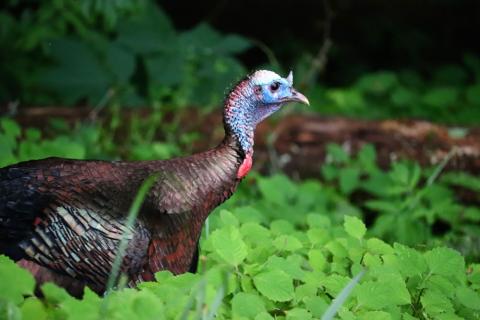Brandon Cobb

The walls of most tackle stores resemble a psychedelic kaleidoscope with thousands of colors in every lure color imaginable. Options are great, but at some point, it can get overwhelming. From merthiolate (yes, that’s a real color) to electric chicken (also real), where in the world do you start? When it comes to bass fishing, there are no set rules on what lure colors work when, but it can be simplified somewhat.
First, we’re talking about soft plastics. I keep well stocked with a variety of baits. But I like to have a surplus of go-to colors, rather than every color under the sun. This strategy will not only save you money, but you are never in short supply of your go-to soft plastics. You can also quickly grab a couple of bags of your favorites when you are in a hurry. I would say soft plastic colors can be lumped into three categories: bright “bass fooling” colors, natural, and dark. You won’t find “bass fooling” in the dictionary, but it is a favorite lure color around here.
I like the bright colors to trick bass into biting, especially in the spring. For some reason, anglers may never know why, but bass will absolutely crush a brightly colored worm when they are up spawning. Next, we talk about natural colors like green pumpkin, watermelon, pumpkin, etc. These are my bread-and-butter colors for soft plastic fishing. Green pumpkin resembles a multitude of forages all across the country and is probably the staple color for nearly every angler in the country. I’m no different. Dark worms are essential in many situations. A worm that is black or heavy on the black hue is perfect for extremely dirty water or night fishing. Seems opposite, right? But, black shows up much better in dark water than any other color. When it comes to plastics, pay attention to the color as a whole. The seven flakes of green glitter vs. blue glitter probably isn’t going to make or break it.
Now let’s think about hard baits. Hard baits can vary some depending on the type of bait. You can lump a lot of hard baits in with crankbaits, but when it comes to crankbaits, I’m thinking about three groups as well. You have natural baitfish, bright, and craw patterns. Some anglers may disagree, but I do not have a crankbait “bass fooling” color category.
The natural patterns excel in clear water situations, where you’re trying to match the hatch. Bright colors are awesome for stained-water situations. A firetiger or chartreuse can out-fish a natural color tenfold in muddy water. Craw colors are phenomenal in the early spring. A bright red craw catches more fish in the cold prespawn than any other color. Topwaters are different. Keep in mind when fishing topwaters, the fish are looking at the bottom. When I used to work in a tackle store, I can’t tell you how many people would say, “It has to have a blue back!” The whole time I was thinking, “You do know bass can’t fly.” I think about clears, whites, and blacks for lure colors on topwaters. It can be trial and error to see which is most successful, but concentrate on what bass can see from below.
If you want to join the “anglers gone wild” club, you can sort your soft plastics and hard baits by water clarity. For instance, you have one box of soft plastics for dirty water and another for clear water. You can do the same with your hard baits assortment.
As all anglers know, color selection can be one of the most overwhelming choices in fishing, but simplifying it down can help — especially in terms that work for you, like “bass fooling.” Look at big changes, not too subtle differences. Good luck!



























